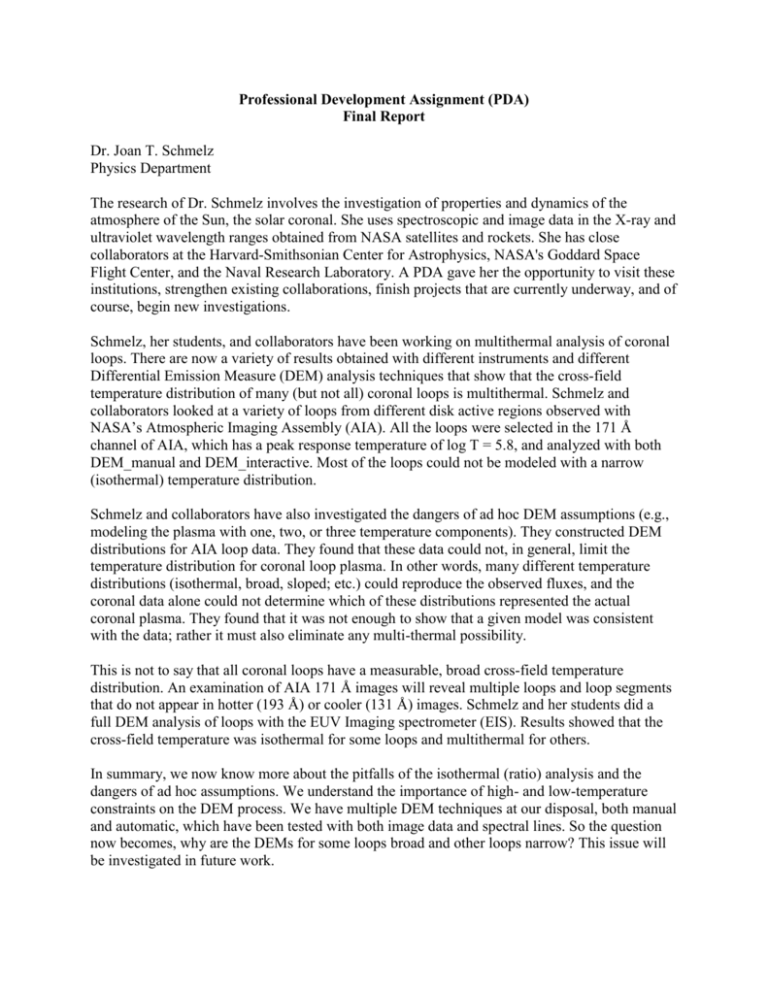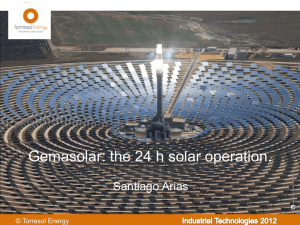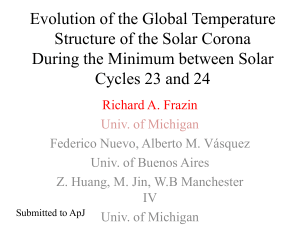Joan Schmelz
advertisement

Professional Development Assignment (PDA) Final Report Dr. Joan T. Schmelz Physics Department The research of Dr. Schmelz involves the investigation of properties and dynamics of the atmosphere of the Sun, the solar coronal. She uses spectroscopic and image data in the X-ray and ultraviolet wavelength ranges obtained from NASA satellites and rockets. She has close collaborators at the Harvard-Smithsonian Center for Astrophysics, NASA's Goddard Space Flight Center, and the Naval Research Laboratory. A PDA gave her the opportunity to visit these institutions, strengthen existing collaborations, finish projects that are currently underway, and of course, begin new investigations. Schmelz, her students, and collaborators have been working on multithermal analysis of coronal loops. There are now a variety of results obtained with different instruments and different Differential Emission Measure (DEM) analysis techniques that show that the cross-field temperature distribution of many (but not all) coronal loops is multithermal. Schmelz and collaborators looked at a variety of loops from different disk active regions observed with NASA’s Atmospheric Imaging Assembly (AIA). All the loops were selected in the 171 Å channel of AIA, which has a peak response temperature of log T = 5.8, and analyzed with both DEM_manual and DEM_interactive. Most of the loops could not be modeled with a narrow (isothermal) temperature distribution. Schmelz and collaborators have also investigated the dangers of ad hoc DEM assumptions (e.g., modeling the plasma with one, two, or three temperature components). They constructed DEM distributions for AIA loop data. They found that these data could not, in general, limit the temperature distribution for coronal loop plasma. In other words, many different temperature distributions (isothermal, broad, sloped; etc.) could reproduce the observed fluxes, and the coronal data alone could not determine which of these distributions represented the actual coronal plasma. They found that it was not enough to show that a given model was consistent with the data; rather it must also eliminate any multi-thermal possibility. This is not to say that all coronal loops have a measurable, broad cross-field temperature distribution. An examination of AIA 171 Å images will reveal multiple loops and loop segments that do not appear in hotter (193 Å) or cooler (131 Å) images. Schmelz and her students did a full DEM analysis of loops with the EUV Imaging spectrometer (EIS). Results showed that the cross-field temperature was isothermal for some loops and multithermal for others. In summary, we now know more about the pitfalls of the isothermal (ratio) analysis and the dangers of ad hoc assumptions. We understand the importance of high- and low-temperature constraints on the DEM process. We have multiple DEM techniques at our disposal, both manual and automatic, which have been tested with both image data and spectral lines. So the question now becomes, why are the DEMs for some loops broad and other loops narrow? This issue will be investigated in future work. The following papers have been published as part of the PDA: Isothermal and Multithermal Analysis of Coronal Loops Observed with AIA: Schmelz, J.T., Jenkins2, B.S., Worley2, B.T., Anderson2, D.J., Pathak2, S., Kimble1, J.A. (2011), Astrophysical Journal, 731, 49 Warm and Fuzzy: Temperature and Density Analysis of an Fe XV EIS Loop: Schmelz, J.T., Rightmire1, L.A., Saar, S.H., Kimble1, J.A., Worley2, B.T. (2011), Astrophysical Journal, 738, 146 Isothermal and Multithermal Analysis of Coronal Loops Observed with AIA: II. 211-Selected Loops: Schmelz, J.T., Worley2, B.T., Anderson2, D.J., Pathak2, S., Kimble1, J.A., Jenkins2, B.S., Saar, S.H. (2011), Astrophysical Journal, 739, 33 Using a Differential Emission Measure and Density Measurements in an Active Region Core to Constrain a Steady Heating Model: Winebarger, A.R., Schmelz, J.T., Warren, H.P., Saar, S.H., Kashyap, V.L. (2011), Astrophysical Journal, 740, 2 Defining the “Blind Spot” of Hinode EIS and XRT: Winebarger, A.R., Warren, H.P., Schmelz, J.T., Cirtain, J.W., Mulu-Moore, F., Golub, L., Kobayashi, K. (2011), Astrophysical Journal Letters, 746, L17 Composition of the Solar Corona, Solar Wind, and Solar Energetic Particles: Schmelz, J.T., Reames, D.V., von Steiger, R., Basu, S. (2012), Astrophysical Journal, 755, 33 The Cold Shoulder: Differential Emission Measure Analysis of Active Region Cores: Schmelz, J.T., Pathak2, S. (2012), Astrophysical Journal, 756, in press Deriving Plasma Densities and Elemental Abundances from SERTS Differential Emission Measure Analysis: Schmelz, J.T., Kimble1, J.A., Saba, J.L.R. (2012), Astrophysical Journal, in press 1 2 UofM physics graduate student UofM physics undergraduate student







